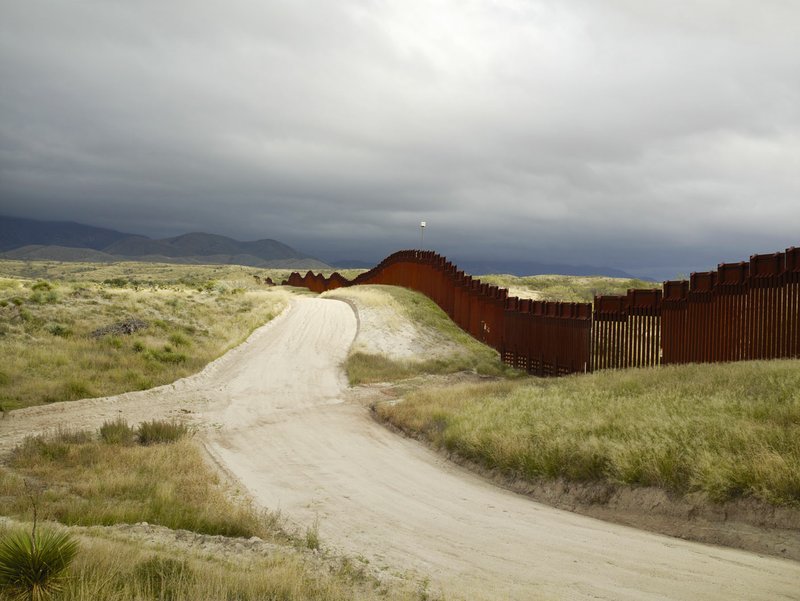WHAT A timely topic. It’s as if Crystal Bridges Museum of American Art anticipated the current political uproar along the U.S.-Mexican border and arranged to show an exhibit that reveals how contemporary art is capable of handling contemporary issues.
Border Cantos: Sight & Sound Explorations from the Mexican-American Border, at Crystal Bridges through April 24, isn’t easy to describe, but here goes: It’s a series of huge, stark, poignant photographs by Richard Misrach, which are related and intertwined with sculptures and musical instruments hand-crafted from found objects by Guillermo Galindo.
Mr. Misrach, who’s been photographing the deserts of the West for 40 years, runs across all sorts of left-behinds as he prowls the landscape, many of them—boots, water bottles, books, gloves, tiresabandoned by migrants hoping to make their way across the border from Mexico to the U.S. He brings the stuff to Mr. Galindo, an experimental composer, sound designer and sculptor, who fashions sound-generating sculptures (including an eerie-sounding theremin made from a bent bicycle rim) from them.
“We want to give people the experience of the border and to get acquainted with the immigrants’ journey, to make it palpable, to make it human,” says Mr. Galindo.
“It costs $4 million-$12 million per mile to build walls,” Mr. Misrach says. The trouble is, though, “They’re symbolic; they don’t keep people out. It’s a political game.”
There’s nothing pretty about the challenges of crossing the border illegally. But somehow Mr. Misrach achieves the impossible. “I go to great lengths to make beautiful pictures out of these things,” he says. The absence of people in most of his work, he says, “makes these pictures a meditation on issues. You’re not told what to think.”
There’s lots to see: Sculptures that resemble scarecrows in migrants’ clothing, displays of wall-building materials, creative styles of ladders used to scale those walls, and thought-provoking images of water tanks placed by humanitarian groups in remote areas where migrants move through tough terrain in 120-degree temperatures; worn-out flags that marked the tanks’ locations hang from the museum’s ceiling.
“People on both sides of the political spectrum are putting water out there,” Mr. Misrach notes. Along with the photos, Mr. Galindo created a sculpture from left-behind water jugs that stands in the walkway outside the exhibit gallery.
Then there’s a grid of photos titled Cutting for Sign, a low-tech method that allows trackers to monitor undocumented traffic. By dragging tires that evenly mark the soft ground, agents can notice fresh tracks among the tires’ uniform patterns. To thwart the agents’ work, migrants wear footwear padded with carpet and foam so their footprints don’t disturb the sand. “There are pieces of carpet everywhere,” says Mr. Misrach.
That’s just the start; “you have to spend time,” Mr. Misrach suggests.
At the exit of the museum’s first bilingual exhibition, visitors are welcome to add their immigration stories by writing or drawing their families’ experiences on sticky notes and plastering them on a giant world map. “I had no idea when we started this that this would be so topical,” says Mr. Misrach. “I hope people learn lessons in the future about who we were.” And how we go about dealing with the divisive issue of migration and its effect on regions and people.

